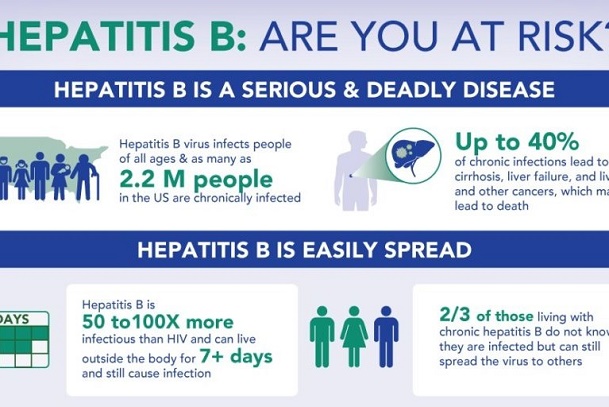 Wash your hands regularly and wear a face mask.
Learn more
Wash your hands regularly and wear a face mask.
Learn more

Introduction
Hepatitis B is a liver infection caused by the hepatitis B virus (HBV). HBV is one of five types of viral hepatitis. The others are hepatitis A, C, D, and E. Each is a different type of virus, and types B and C are most likely to become chronic. The term 'hepatitis' simply means inflammation of the liver.
HBV infection can be acute or chronic. Most adults with hepatitis B develop acute hepatitis which recovers fully, even if their signs and symptoms are severe. Infants and children are more likely to develop a chronic (long-lasting) hepatitis B infection. Having chronic hepatitis B increases your risk of developing liver failure, liver cancer or cirrhosis — a condition that permanently scars of the liver.
In 2015, hepatitis B resulted in 887,000 deaths, mostly from complications (including cirrhosis and hepatocellular carcinoma). It is estimated that 257 million people are living with hepatitis B virus infection (defined as hepatitis B surface antigen positive).
Hepatitis B is found throughout the world. Some countries have much higher rates of infection than the United States; for example, in Southeast Asia and Sub-Saharan Africa, as many as 10% to 30% of adults are chronically infected with hepatitis B.
Hepatitis B Transmission
Hepatitis B is highly contagious and is transmissible when blood, semen, or another bodily fluid from a person with the virus enters the body of an individual who does not have it. Although the virus can be found in saliva, it’s not spread through sharing utensils or kissing.
It should be understood that HBV infection can occur:
Medical scientists may be at risk through unsafe medical practices, such as reusing medical equipment, not using personal protection, or incorrectly disposing of sharps.
HBV cannot spread through:
The virus can survive outside the body for at least 7 days. During this time, it can still cause infection if it enters the body of a person who has not received vaccination against it.
Symptoms of Hepatitis B
Signs and symptoms of hepatitis B range from mild to severe. They usually appear about one to four months after you've been infected, although you could see them as early as two weeks post-infection. Some people, usually young children, may not have any symptoms.
Many HBV infections occur during infancy or childhood. This is because a mother can pass HBV to her child during childbirth. However, doctors rarely diagnose HBV in childhood, as it causes few obvious symptoms.
Symptoms of a new HBV infection may not be apparent in children under 5 years of age or in adults with a suppressed immune system. Among those aged 5 years and over, around 30–50% will show initial signs and symptoms.
Acute symptoms appear around 60 – 150 days after exposure to the virus, and they can last from several weeks to 6 months.
Hepatitis B signs and symptoms may include:
[Next Week: Management of Hepatitis B]